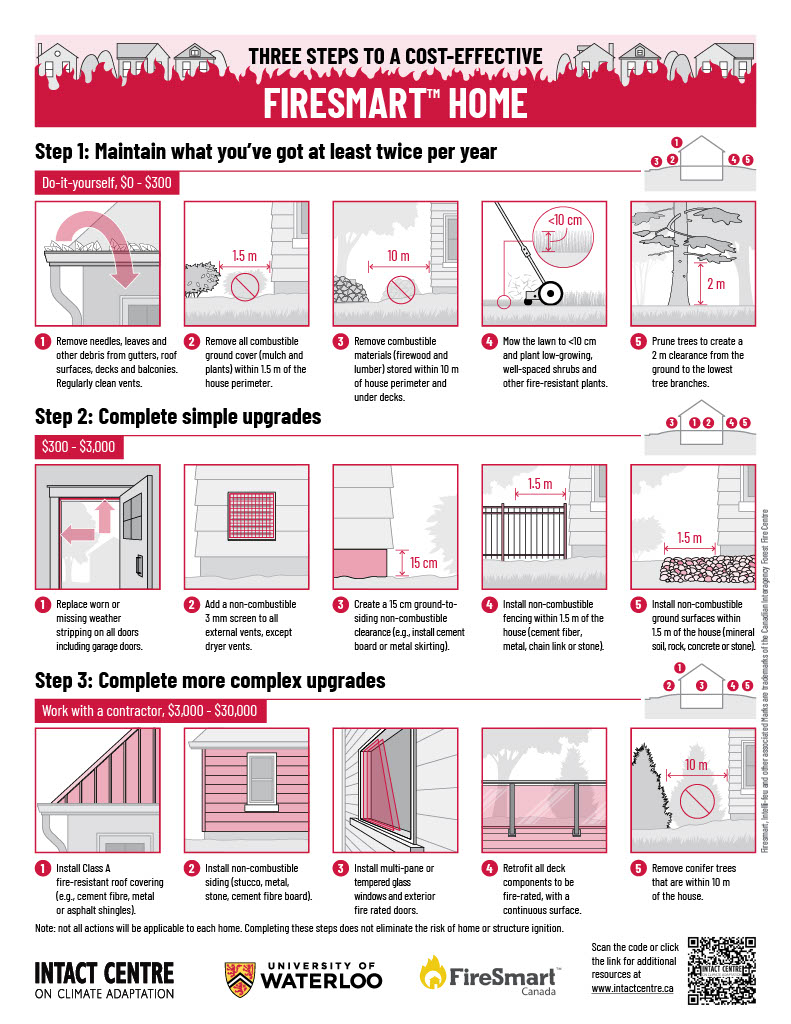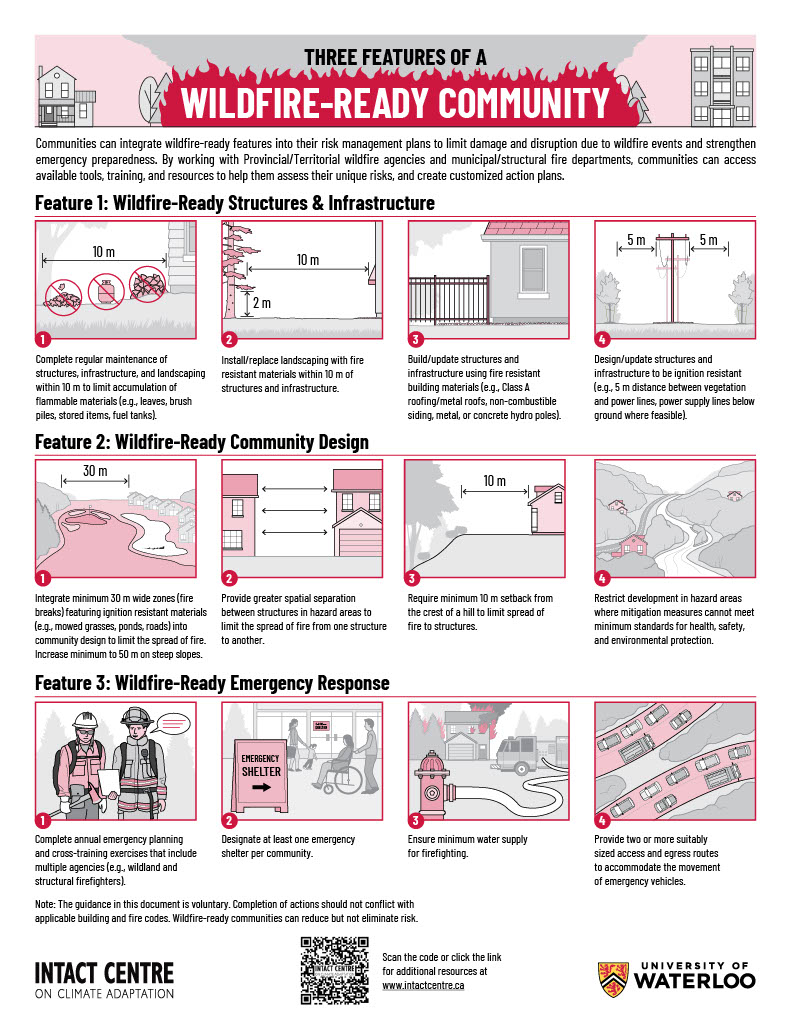The record wildfire season of 2023 shows Canadian homes and communities are “very vulnerable” to the damage that blazes can cause.

A new report by the Intact Centre on Climate Adaptation at the University of Waterloo published on Monday aims to provide practical advice for homeowners and communities to reduce their risk of wildfire damage.
After a record year that saw 18.5 million hectares of land burned, Anabela Bonada said it’s among the most important reports the centre has ever produced.

The 2023 season was “kind of like a warning that as wildfire seasons get longer and worse, they could encroach even more on our communities,” said Bonada, manager and research associate with the centre, in an interview with Global News.
“Canadians have been moving into these areas more and more in the past few years. We have drier material around these communities, so if these wildfires continue to move forward and consume communities … then it will be more and more major.”
That is something Canadians have seen in the past, most recently in 2021 when the entire community of Lytton, B.C., burned down.
Of course, Canadians will never forget the destruction caused in 2016 by the Fort McMurray wildfires — the most expensive disaster in the country’s history for insurance providers with a price tag of $3.58 billion, according to the Insurance Bureau of Canada.
“We’re very vulnerable. Some communities are starting to implement some of the guidance that’s in the report, but especially at the home level, not a lot of people are implementing these actions, and that’s what we’re hearing,” Bonada said.
“People in those communities are either not aware that they’re at fire risk, or aware that there are actions that they can do around their homes and their own property to really reduce their risk.”

The report breaks down its advice in two infographics: one for homeowners, and the other for communities.
In its homeowner guide, the centre lays out measures in three steps ranging from do-it-yourself (DIY) work to working with a professional on upgrades.

Get breaking National news
When it comes to DIY, the report advises homeowners to regularly take steps like:
- removing leaves and other debris from gutters, roof surfaces, decks and balconies
- removing combustible material stored within 10 m from the home
- removing all combustible ground cover like mulch and plants within 1.5 m of the house
- keeping the lawn to under 10 cm in length
- pruning trees to create a 2 m clearance from the ground to lowest tree branch
For upgrades, the centre recommends homeowners replace worn or missing weather stripping on all doors, as well as adding non-combustible screening to all external vents and installing non-combustible materials like metal, chain link or stone fencing within 1.5 metres of the home, among other measures.
More complex upgrades homeowners can do include installing non-combustible siding like stucco or stone, installing a Class A fire-resistant roof covering and retrofit all deck components to be fire rated with a continuous surface.
“What we’ve found through all the research that we did for this report is that if you implement all of these actions, you could reduce the chance of your home burning by 75 per cent,” Bonada said.
“A home is likely the biggest investment that many people will have across the country, and even if it’s not the home that you own but you live in, being displaced is not something that’s welcome.”
Given the insured price tag that comes with wildfire damage, Bonada added it would be in Canadians’ “favour” to implement these steps.
“I highly recommend they contact their insurance provider and ask: ‘Are there any sort of policies around me implementing these actions and in any way that you support me?’” she said.
“If customers start to ask insurance companies, something can come out of it because you’re going to be saving your home, but you’re also going to be saving the insurance companies from paying out those insured losses that we’re seeing.”

In its community guide, the centre advocates for regular maintenance of structures, infrastructure and landscaping, install/replace landscaping with fire resistant materials within 10 metres of structures and infrastructure, build/update structures and infrastructure using fire resistant building materials and design/update structures and infrastructure to be ignition resistant.
It also recommends communities have greater separation between structures in hazard areas to limit the spread of fire, and to restrict development in hazard areas where mitigation measures can’t meet minimum standards for health, safety and environmental protection.
Finally, the centre advises communities designate at least one emergency shelter per community, have adequate water to fight fires and provide two or more suitably sized access and egress routes for emergency vehicles, among other measures.
“Our biggest advice is also for the government to have a role in this. Governments have a lot of competing priorities; a lot of funding requested all the time — our suggestion is something that is really low cost and it’s just launching a national wildfire education program,” Bonada said.
“Letting people know that they are at risk and providing the tools. That’s what this report is doing. … It takes a long time to put this together and for nobody to use it means lives lost (and) property loss. I encourage the government to launch a program for people to actually use the tools that we have.”
Ottawa has pledged $1.6 billion to improve Canada’s climate resilience as part of its National Adaptation Strategy, which calls for communities in high-risk zones to “develop wildfire community prevention and mitigation plans by 2030, with up to 15 per cent implemented by 2028.”
— with files from The Canadian Press











Comments